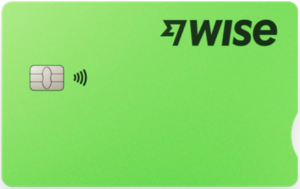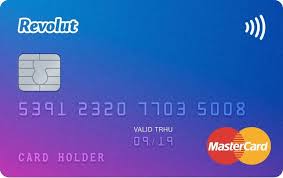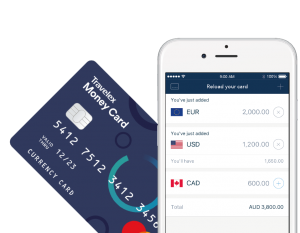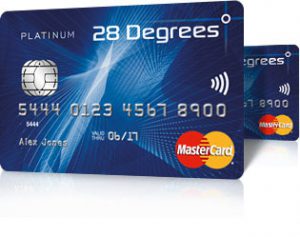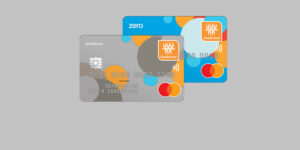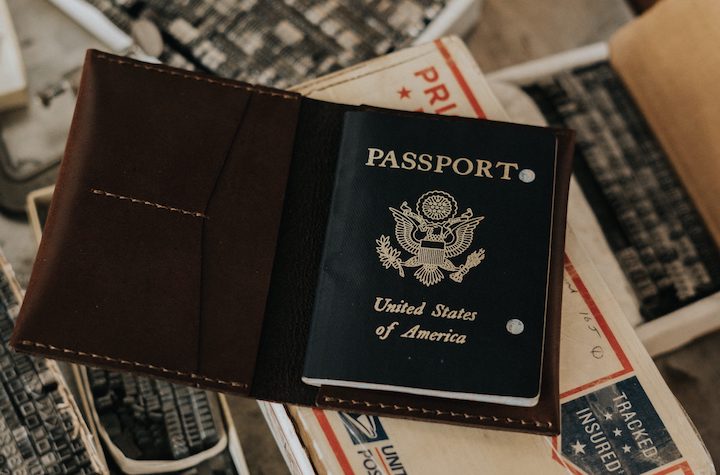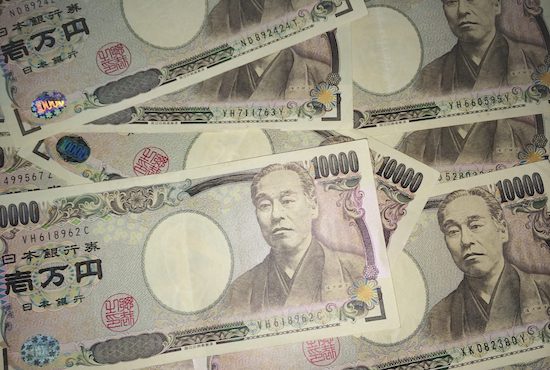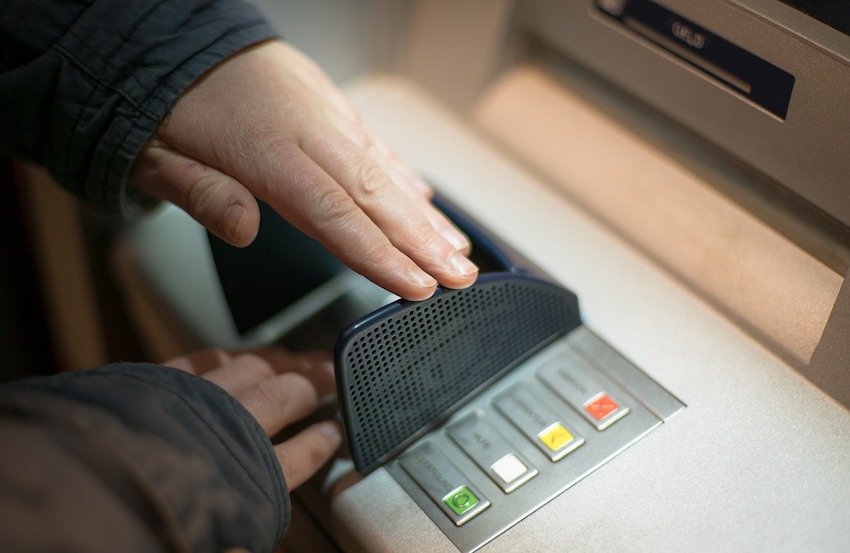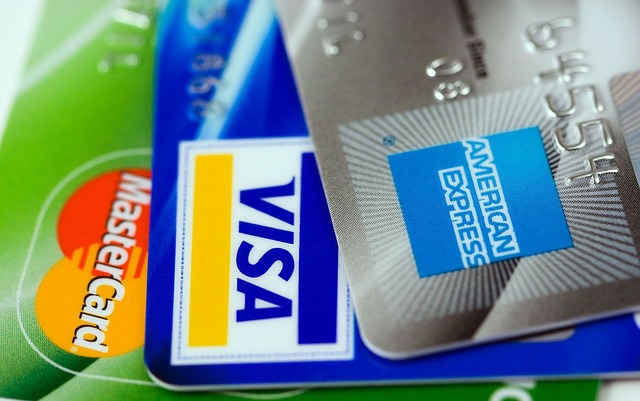5 Best Travel Cards to Use in Japan
Japan is one of the top destinations for Australians looking to experience something new and exciting - and a perfect choice all year round. Although cash is still pretty commonly used, you’ll often find you can pay with a card in hotels, restaurants and malls - and of course, you can always use your card at an ATM to get cash when you need to.
In this guide we compare 5 of the best travel cards for Japan, and present their best features so you can pick one.
5 best travel cards for Japan
- Wise - debit card
- Revolut - debit card
- Travelex - prepaid card
- 28 Degrees Platinum - credit card
- Bankwest Zero Platinum Mastercard - credit card
Wise is our pick for travel debit card for Japan
- Convert Aussie dollars to Japanese Yen at the mid-market exchange rate
- It's very easy to set up and order
- You can receive foreign currency into a multi-currency account linked to the card
- You can transfer money to a bank account overseas
It's not all good news though
- There is a 2% ATM withdrawal fee when you withdraw over $350 during a month
- It takes 7-14 days for delivery
Click here to see the full list of cards and how Wise compares
What are different types of travel cards?
It can be tricky working out which is the best travel card to use in Japan.
The fact is, the best one for you will really depend on what you need from the card you're using. We've listed what we think are three of the best travel money cards you can use while you're in Japan.
They can be either prepaid, debit or credit cards designed specially for overseas use. You can use travel cards to make purchases online, in stores and to withdraw money at ATMs. There are 3 popular types:
Let's have a look at each one.
Travel Debit Cards
Debit Cards offer the convenience of a credit card, but work differently. They draw money directly from your bank account when you make a purchase. It's designed for everyday money transactions and means that you're not accumulating debt.
A debit card could make you stick to your travel budget, because you can't overdraw money from your account. And for daily purchases, we think a debit card can help you stick to your travel budget, because you can't overdraw money from your account.
Generally, we recommend having the combination of a travel debit and travel credit card for safety, flexibility and convenience on your trip.
Wise - travel debit card for Japan
The Wise card offers a flexible way to pay and make withdrawals in JPY. You’ll be able to order your card for a low one time fee, with no ongoing costs to worry about.
Whether you’re spending in JPY, USD, British pounds, or any of the other 40+ currencies supported, you’ll get the mid-market exchange rate when you switch from AUD, with low fees from 0.43%. Exchange your AUD to the currency or currencies you need in advance, or just let the card handle the conversion at the point of payment for extra convenience.
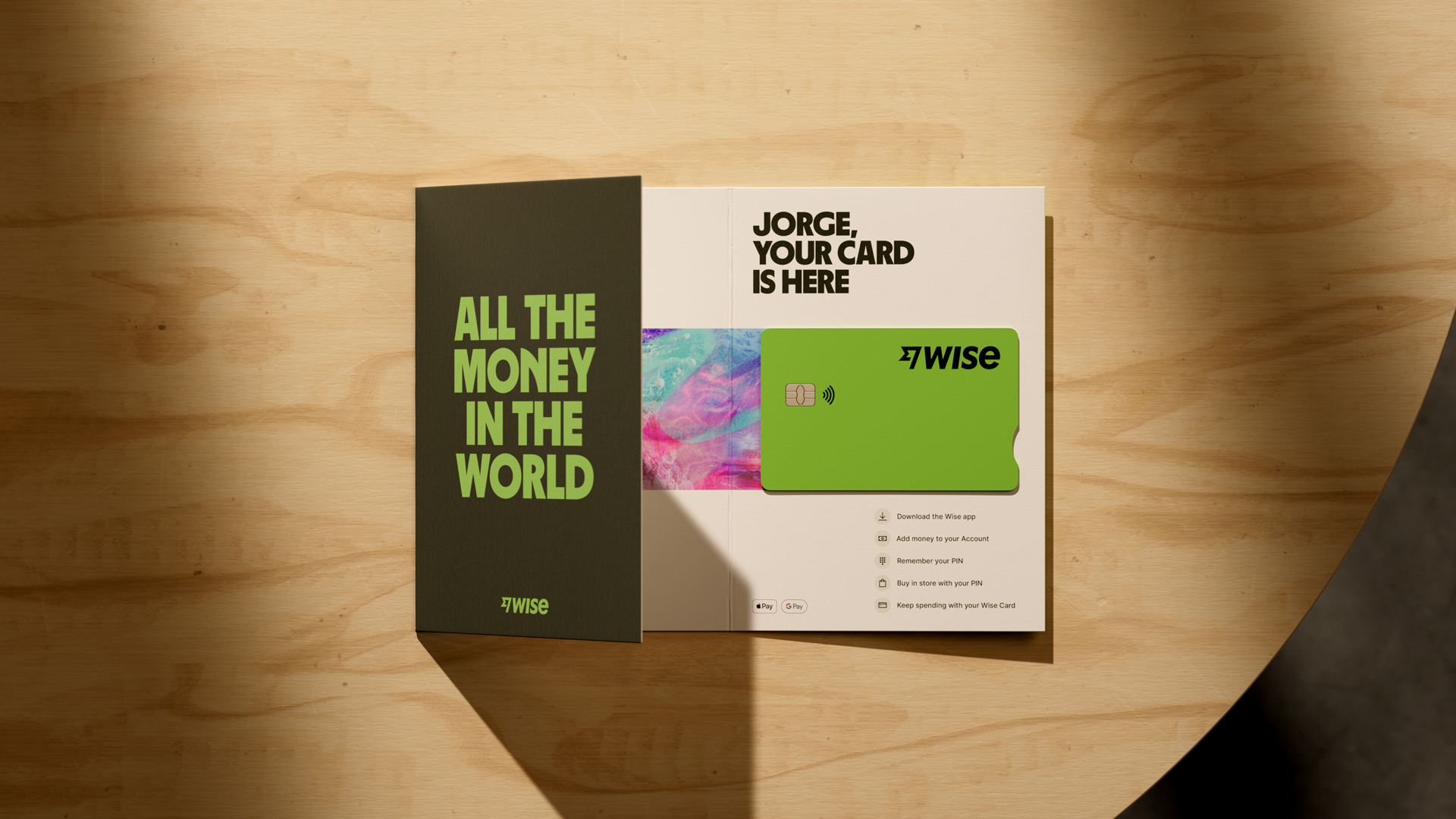
- No annual fee, hidden transaction fees, exchange rate markups
- No minimum balance requirements
- Allows you to make payments and withdrawals wherever you are in the world in over 40 currencies
- Local bank account details in Australia (AUD), the UK (GBP), the USA (USD), Europe (EUR) and New Zealand (NZD)
- It takes 7-14 business days to receive the card
- Can't always access local technical support depending on where you are
- Free cash withdrawals limited to under $350 every 30 days
- Only currently available in the US, UK, Europe, Australia and New Zealand
Revolut - prepaid travel card for Japan
With this card:
- No purchase fee, load fee, reload fee, exchange rate margin or minimum balance requirements
- Unlike other Travel Cards, its free and easy to use the balance of your currency or convert it back to AUD
- Mid-market exchange rate, they add a mark-up for currency conversion during weekends
It's not all good news though
- For the free Standard account, there is a 2% ATM withdrawal fee when you withdraw over $350 during a month
- The premium account costs $10.99 a month, which can really add up if you are not using it often
Click here to see the full list of cards and how Revolut compares
- Very easy to use app
- Free to set up
- No hidden fees or exchange rate mark-ups (except on weekends)
- You can use it to transfer money to a bank account overseas
- Additional fees for using the card on a weekend
- 2% ATM fee once you withdraw more than $350 in any 30 day period
- 3-4 business days before you receive your card
- Ongoing subscription fee for Premium and Metal cards
Prepaid Travel Cards
For prepaid cards, you're able to load the card with a set amount of money in the currencies you need. Ideally you do this before your trip, but often you can reload them as well.
Most prepaid travel cards allow for multiple currencies to be loaded onto the card. So it's important to know what currency you'll be using on your travels. Airlines also offer prepaid cards so the money you spend can earn you reward points.
With prepaid travel cards you need to be careful. They can have numerous fees and charges, which can make it more expensive than other options. But if you're organised and travelling to multiple cities a prepaid travel card is a good option.
Travelex - prepaid travel card for Japan
With this card:
- Hold and exchange 9 major currencies, covering Japan and other popular travel destinations
- Order online or call into a branch to get your card instantly in person
- No Travelex fee to spend or withdraw a foreign currency you hold in your account
It’s not all good news though:
- Exchange rate markups are likely to apply when you convert or spend in a currency you don’t hold
- Costs apply for if your card isn’t used for 12 months, and to close your account
- 9 major currencies supported
- No Travelex fee for overseas ATM use
- No fee to spend a currency you hold
- Get your card instantly in a branch
- Exchange rate markups are likely to apply when you spend a currency you don’t hold
- ATM operators may charge their own fees
- Inactivity fee applies after 12 months
- Account closure costs may apply
Travel Credit Cards
Credit cards have obviously been around for a long time. But now there are specialised travel credit cards. Generally, these cards give you longer to pay back what you've spent but the interest rates after this time can be quite high.
The main advantage with credit cards are the reward points you get in return for your customer loyalty when you spend. But it only works if you pay off the balance in full each month.
Credit cards are great to use for car hire, restaurants and accommodation - larger expenses that are easier for you to pay back over time. Some services only take credit cards to hold purchases so they can definitely be handy while you're travelling.
28 Degrees - travel credit card for Japan
With this card:
- There are no annual fees
- No overseas purchase fee or currency conversion fee
- You get 55 days interest free on purchases
- Access to free 24/7 concierge service
- Emergency card replacement worldwide
The 28 Degrees Platinum Mastercard has additional benefits including shoppers and repayments benefits cover.
- Can have 9 additional cardholders
- No overseas purchase fee, or currency conversion fee
- No foreign transaction fee
- Free Replacement Card
- High interest rates after the initial 55 days
- Minimum credit limit is $6,000
- No introductory offers or rewards
Bankwest Zero Platinum Mastercard - travel credit card for Japan
With this card:
- No annual fee and no foreign transaction fee
- Ways to spread the costs of purchases and spending over months
- Relatively low interest for eligible customers
It’s not all good news though:
- Higher interest and cash advance costs apply for ATM use
- Interest charges may apply depending on how you manage your card
- No annual fee
- No foreign transaction fee to spend overseas
- Spread the cost of travel across several months
- Split costs of eligible purchases into 4 instalments, with 0% interest
- Interest and penalty fees may apply
- You’ll need a credit check to get your card
- 3% or 4 AUD (whichever is greater) cash advance fee
- Higher interest applies when you use an ATM
The Bankwest Zero Platinum Mastercard has some great features for eligible customers, including no annual fee and no cash advance fee. However, as with all credit cards, interest charges may apply - and there’s a fairly high cost for using an ATM. As cash is commonly used in Japan, you may prefer a debit card when you make JPY withdrawals to cut the overall amount you pay.
What is a travel money card?
You can use a travel money card for secure and convenient payments and withdrawals overseas. If you’re heading to Japan, it’s worth remembering that some places won’t accept card payments. Cash is still commonly used - so finding a card which has low or no ATM fees is handy for getting enough cash to get by without excessive costs.
That said, you can often use a travel money card to tap and pay in major stores and restaurants, particularly in tourist areas and large cities. You can also use your card with a wallet like Apple Pay to make mobile payments.
Although there are lots of different travel money cards on the market, all of which are unique, one similarity you’ll spot is that the features and fees have always been optimised for international use. That might mean you get a better exchange rate compared to using your normal card overseas, or that you run into fewer fees for common international transactions like ATM withdrawals.
Travel money cards also offer distinct benefits when it comes to security. Your travel money card isn’t linked to your AUD everyday account, so even if you were unlucky and had your card stolen, your primary bank account remains secure.
Travel money vs prepaid card vs travel credit card
It’s helpful to know that you’ll be able to pick from several different types of travel cards, depending on your priorities and preferences. Travel cards commonly include:
They all have distinct benefits when you head off to Japan or elsewhere in the world, but they do work a bit differently.
Travel debit and prepaid cards are usually linked to an online account, and may come from specialist digital providers - like the Wise card. These cards are usually flexible and cheap to use. You’ll be able to manage your account and card through an app, including getting instant conversion or transaction notifications.
Travel credit cards are different and may suit different customer needs. As with any other credit card, you may need to pay an annual fee or interest and penalties depending on how you manage your account. Generally using a travel credit card can be more expensive compared to a debit or prepaid card - but it does let you spread out the costs of your travel across several months if you’d like to and don’t mind paying interest to do so. For Japan in particular, credit cards can be a costly choice because you’ll need to get cash from time to time, which can mean a higher rate of interest and steep cash advance fees.
How to choose the best travel card for Japan
There’s no single best travel card for Japan - all 5 cards in this guide can suit specific customer needs, so it’ll just come down to what’s most important for you. Consider these questions when you’re deciding on which travel card to pick for your upcoming trip:
- What exchange rates does the card use? Choosing one with the mid-market rate or as close as possible to it is usually a smart plan
- What are the ATM charges? You’ll likely have to get cash while you’re in Japan, so choosing a card with low or no ATM costs can help
- Does the card support a good range of currencies? Getting a card which allows you to hold and spend in JPY can give you the most flexibility, but it’s also a good idea to pick a card with lots of currency options, so you can use it again in future, too
- Are there any other charges? Check in particular for foreign transaction fees, local ATM withdrawal fees, inactivity fees and account close fees
Conclusion - Best travel cards for Japan
Customers in Australia can choose from a good range of different travel cards, including debit, prepaid and credit cards. Each card type has its own advantages and disadvantages, and for many people, having more than one card available can be a bonus. Use this guide to choose the best card - or cards - for your unique needs, so you can keep down the costs while making the most of your holiday.
FAQ - 5 best travel cards for Japan
Which card is better to use in Japan?
There’s no single best travel card for Japan. However, having a card which lets you hold a balance in JPY, with no extra fee to spend once you arrive, can be helpful as you can set your budget in advance and lock in the exchange rate. Choose a card with low or no ATM fees if you can - as cash is still commonly needed in Japan.
What's the best prepaid card to use in Japan?
Several banks and providers have good travel cards for Japan. Look out for one which supports a large range of currencies, with good exchange rates and low fees. This guide can help you compare some popular options, including Wise, Revolut and Travelex.
Can I use my Australian debit card in Japan?
Yes, you can use your local debit card when you’re overseas. However, it’s common to find extra fees apply when spending in foreign currencies with a regular debit card. These can include foreign transaction fees and international ATM charges.
What is the best way to pay when travelling in Japan?
Cash is still commonly needed in Japan, although major stores and resorts may take your card. Usually having a selection of ways to pay - including a travel card, your credit or debit card, and some cash - is the best bet. That means that no matter what happens, you have an alternative payment method you can use conveniently.
Which debit card has no fees in Japan?
Check out Wise as a good travel debit card which has no ongoing charges and lets you convert your dollars to JPY with no extra fees to spend once you arrive in Japan. Currency exchange uses the mid-market rate with low conversion fees from 0.35%.
Is Visa or Mastercard better for Japan?
Both Visa and Mastercard are globally accepted. Look out for the logo on ATMs and payment terminals in Japan.
Need to know more about travelling to Japan?

